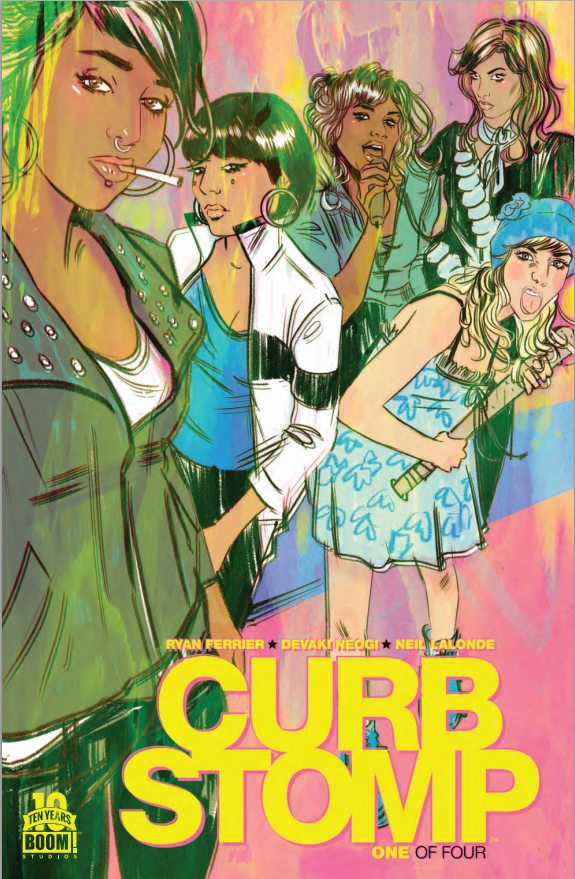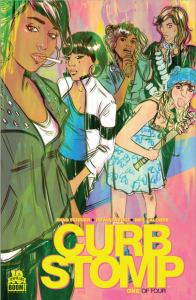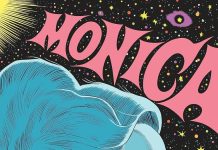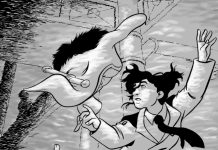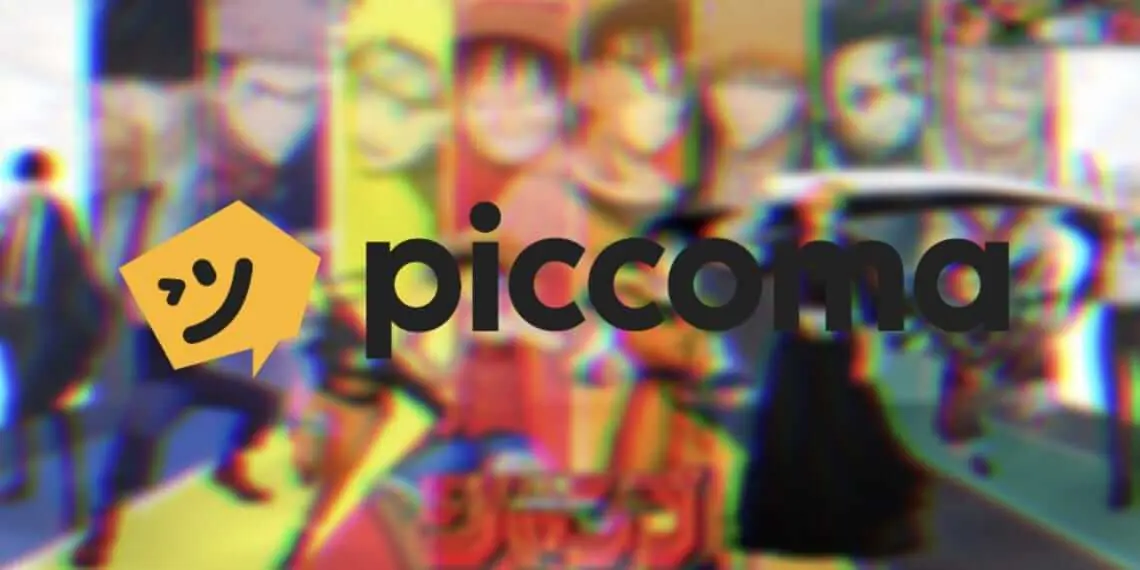Illustrated by: Devaki Neogi
Colors by: Neil Lalonde
Letters by: Colin Bell
Publisher: Boom Studios
The time period of Boom Studio’s limited series Curb Stomp is somewhat tough to pin down. The clothing styles vacillate from the 50s through the 70s, which of course form the template for the hot styles of today. The convenience stores have a modern look, as does the one television set I spotted (there’s nary a cell phone or a computer to be found). At least for now, it doesn’t really matter: Curb Stomp traffics in a genre defined by the pulp novels and exploitation films of those aforementioned eras, so it makes sense that the look of it is something of a review of these periods.
The story itself is also somewhat timeless: several marginalized neighborhoods surrounding a large city are defined by the gangs that rule them. Newport gang “The Wrath” runs guns and Bayside crew “The Five” runs drugs, leaving the working class people of Old Beach caught between the two. And that’s where the all-woman gang “The Fever” come in. Rather than junk or firearms, The Fever deal justice: with bats, fists and switchblades. “The cops don’t come to Old Beach,”
explains gang-leader Machete Betty,” our justice is D.I.Y.” Rounding out the crew are Violet Volt, Daisy Chain, Derby Girl and Bloody Mary. These ladies are fiercely loyal to each other — as much friends, pillaging each other’s collections for punk rock records — as they are a bad ass gang of broads who fight dirty.
Though the moniker and set-up are firmly grounded in girl-gang pastiche, the racial make-up of the The Fever is a breath of fresh air. Though not explicitly stated, at least three of the group appear to be non-white: Bloody Mary is asian, Violet Volt is black and Machete Betty just might be latino if the cover art is representative. If it seems odd that I’m so unsure of their ethnicity, you just have to see the comic for yourself: Neil Lalonde has had a field day coloring it. His use of bright and contrasting hues gives the book a pop-punk look, an Andy Warhol sensibility. This really worked for me, especially during a scene in which a crooked city politician makes an alliance with the leaders of The Wrath and Five gangs. There, Lalonde’s use of sickly greens and yellows sets the perfect tone.
Speaking of the art, let’s talk about newcomer Devaki Neogi’s beautiful work on this issue. While we’ve seen some very lovely and modern main-stream comic styles from other Boom titles released this year, Neogi’s art reminded me powerfully of the work of seminal indie comic artists like Charles Burns and Daniel Clowes. The characterizations of the Fever members are sexy, but powerful. These ‘aint your silver-age pin-ups. The clothing and styles the individual Fever members sport seem authentic, if a little showy.
And what of the violence? With a title like Curb Stomp, I worried that it might be handled in an exploitative way — in-step with the exploitation films that lend the book it’s look. Not so. There’s an interesting (if a tad unrealistic) truce amongst the gangs that disallows the use of firearms on each other, leaving skirmishes to be settled with fists and bats rather than drive-by’s. The titular scene forms the spine of the tale: and leaves the perpetrator sick to their stomach. Ferrier plays his plan for the four issue series close to the chest, leaving this first installment to mostly introduce the characters and define the borders of the city and it’s denizens. In our recent interview with the series creator, Ferrier stated the series would have “real social issues and…a lot more messages in it.” The loose sketch of the story is interesting, and if the later issues match the intensity of the art it might be a very interesting series.


